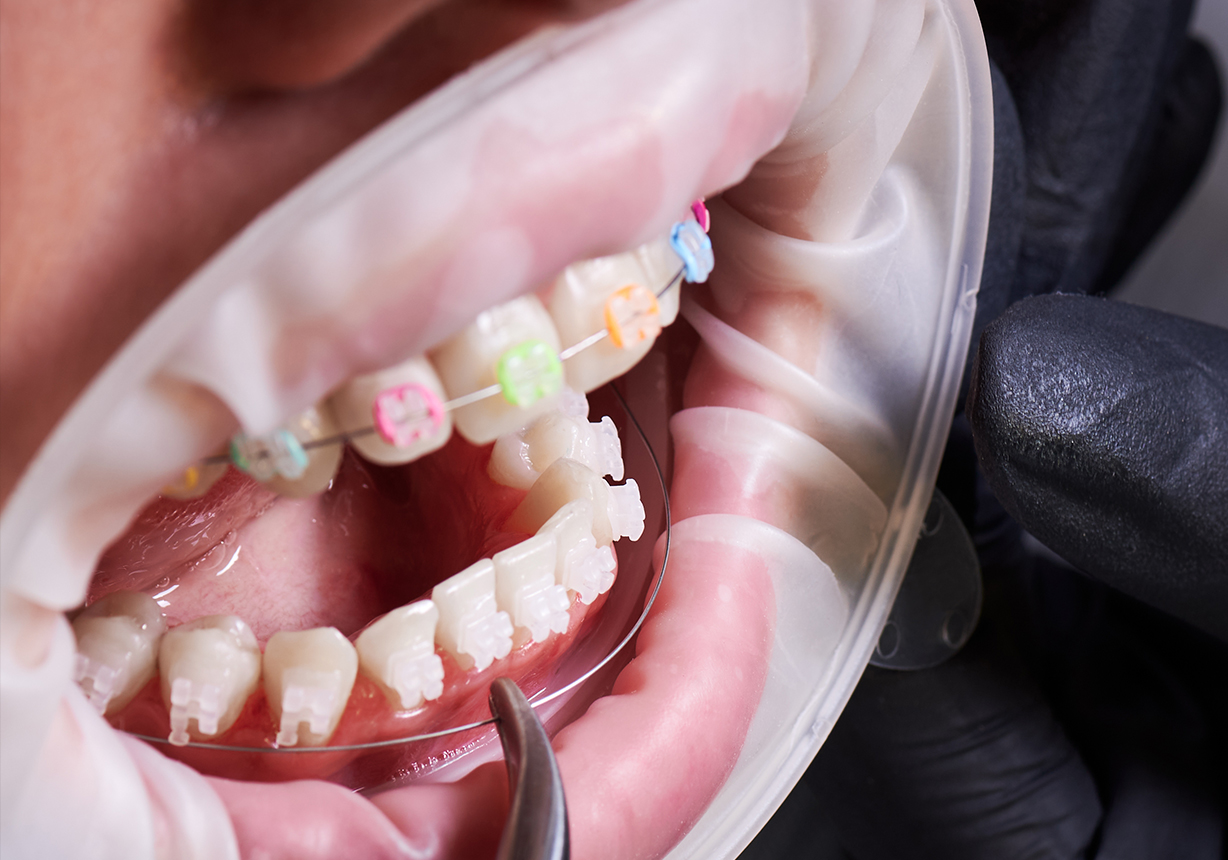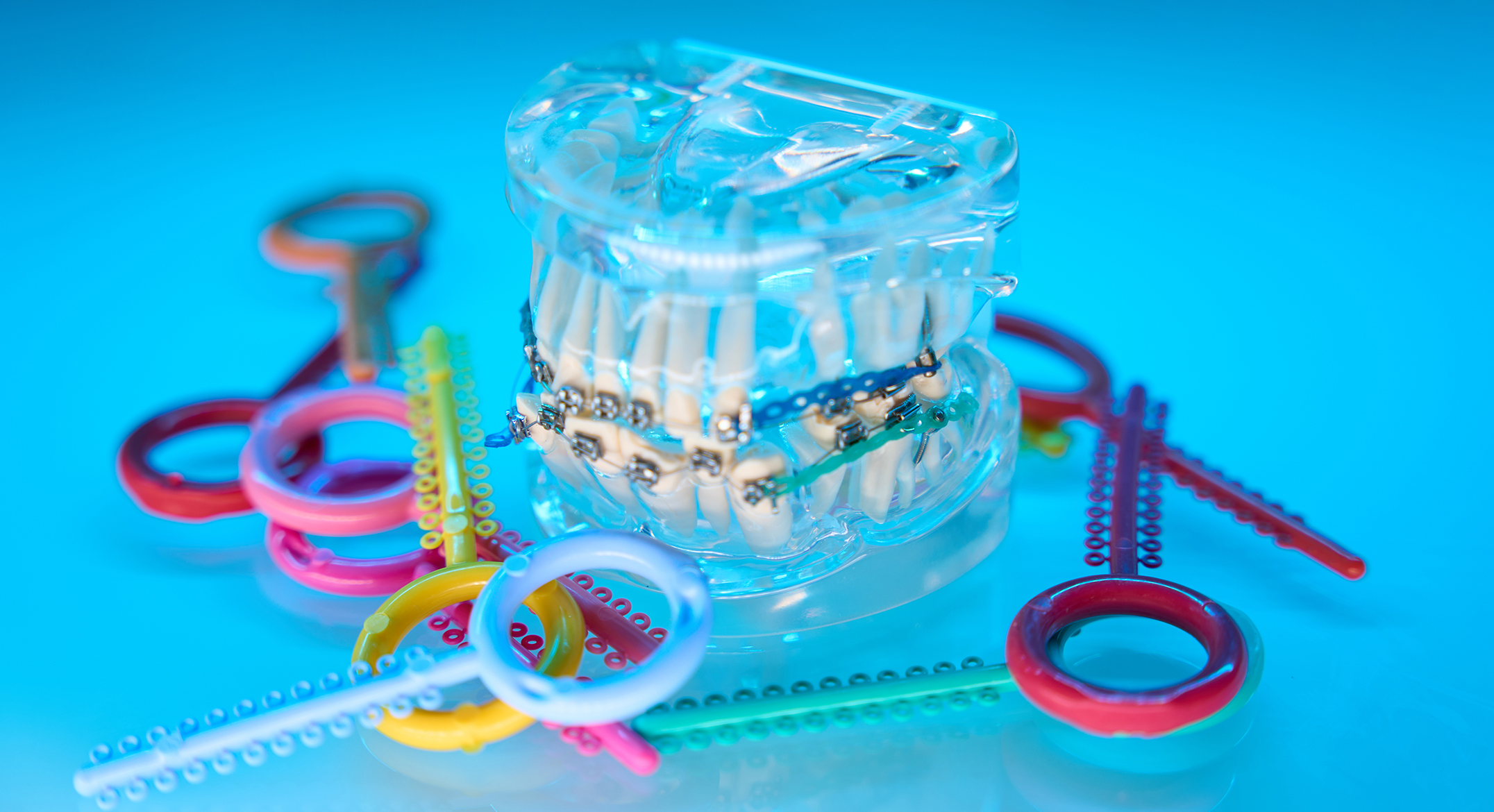
Orthodontic Appliances
Your goal and our goal is shared during orthodontic treatment. We all want the most successful outcome and best positioning of your new smile. Different orthodontic appliances may be prescribed during treatment to reach those goals.
In the following sections, we’ll cover the different types of appliances that may be used during treatment.
Types of Orthodontic Appliances
When your teeth overlap and cover your bottom teeth quite a bit, we may need you to wear a removable bite plane appliance.
A bite plane helps you open your bite and prevents you from causing damage to your bottom braces when you close your mouth. Bite planes are usually worn for 6-9 months and can dramatically lessen the overlap of your bite.
A bite plane can take some getting used to, as it may slightly impair your speech at first. This usually only lasts a few days. You’ll wear your bite plane 24 hours a day. You’ll want to remove it during certain activities such as contact sports, swimming, and brushing your teeth.
When a child or teenager presents with a significant overbite, a crossbow appliance (commonly Xbow™) helps prevent the lower jaw from moving backward.
The Crossbow is the leading alternative to the Herbst Appliance. The Crossbow Class II Corrector can lead to shorter time in braces and because it’s not removable – relies less on patient cooperation that some other devices.
Rubber bands are an extremely important part of treatment. Elastics help adjust your bite and allow your top and bottom teeth to meet properly when you close your teeth together. You’ll always want to carry a package of rubber bands with you at all times.
Rubber bands should be worn 24 hours a day and only be removed during teeth brushing and contact sports when a mouth guard is put in. Rubber bands should be worn when you ear, as this is when you get the most pull from them.
Please remember that rubber bands stretch out and lose their strength over the course of the day. Change your rubber bands at least 3 times each day in order to get you the best bite through orthodontic treatment.
A fixed lingual retainer may provide you the best results with retention after treatment. For patients with great dental hygiene and a low risk of periodontal disease – fixed lingual retainers continuously keep your teeth in the perfect position.
The two most popular advantages of fixed retainers are that they stay in your mouth 24 hours a day, meaning you can’t accidentally lose them and because they’re small, they are much more comfortable to wear.
Even though the words may sound like a lot, this is probably one of the least confusing appliances in orthodontics. The lower lingual holding arch does pretty much what it says. It is placed behind the teeth on your lower arch and holds your molars back from moving forward.
By holding your molars back, we can prevent crowding as your permament teeth are still erupting. This appliance is most often used when baby teeth are lost prematurely or a child’s lower teeth are fairly crowded to begin treatment.
We’ll answer it later, but you may already be wondering – why not use it on the top arch too? See the Nance Arch below. And yes, wouldn’t it be great if it were just called the Upper Lingual Holding Arch?
The archnemisis (orthodontist humor) of the Lower Lingual Holding Arch.
Simply, the Nance Arch holds your upper molars in place to prevent overcrowding while your permanent teeth still erupt.
Positioners help complete the final movements of your orthodontic treatment. You should only need to wear the appliance for 4-8 weeks.
A quad helix expander is used to expand the footprint of the upper teeth. A big advantage of using the quad helix is that doesn’t require any adjustments for a patient or their parents.
We may recommend a quad helix expander to correct a posterior crossbite, a narrow upper arch, or significant crowding with your upper teeth.
The best way to prevent malocclusions (bad bite) is to treat it early and give your teeth the chance to grow in the right environment. A RPE will slowly widen the upper jaw to prevent and treat a poor bite.
We most commonly use a rapid palatal expander with kids, because prior to puberty, the two halves that make up the upper jaw can be stabalized more easily with this appliance.
Most of our patients will use a rapid palatal expander for 3-6 months. You may experience a small amouint of soreness or pressure for the first few days, but over-the-counter medication can ease any discomfort.
Retainers are very important to orthodontic treatment. After all that work and effort, without retention – teeth can move.
Seperators are little rubber doughnuts that may be placed between your teeth to move them apart between appointments to make way for bands.
When your bands are placed, we’ll remove any seperators or spacers. It’s important to note, seperators do not tolerate sticky foods, toothpicks, or flossing.
We’ll work with you to modify your routine between appointments to ensure the separators do their job!
We may use TADs when we want to move certain teeth while keeping other teeth still. Previously, headgear was a popular way to accomplish this, but through advances – temporary anchorage devices were developed.
It can sound intimidating, but these are small “mini-screws” that act like dental implants. TADs allow us to correct issues that would noramlly require corrective jaw surgery, such as an open bite.
There may be some initial soreness where the TADs were placed, but this can be remedied with over-the-counter pain management and rest.
Bite Turbos are small accessories that are bonded to your teeth that put specific pressure on other teeth to help them move more quickly.
We use Turbo Brackets most often with patients that have deep overbites, but they can be used in a variety of other cases as well.
Another advantage of turbo brackets is they prevent biting on your actual brackets and reduce the overall chance for damage to your braces and opposing teeth.

